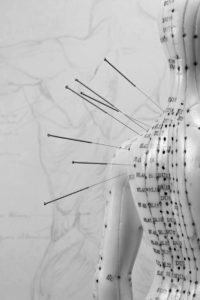Acupuncture
Acupuncture/ Dry Needling
Acupuncture places very fine needles into specific muscles and joints in the body to engage a healing response by attempting to increase blood flow to a particular area and assisting the brain to release pain alleviating neurotransmitters and hormones.
 I have been practising acupuncture since gaining qualification in 1991 and have found it to be an invaluable tool for addressing pain conditions that may otherwise be very stubborn to resolve. Some of the conditions I find it particularly handy with include lower back pain, neck pain, headache syndromes, and referred pain conditions such as sciatica, non-heart related chest pain, and arm pain syndromes. Acupuncture has been known to assist the body to reduce the affects of pain, stress, and inflammation.
I have been practising acupuncture since gaining qualification in 1991 and have found it to be an invaluable tool for addressing pain conditions that may otherwise be very stubborn to resolve. Some of the conditions I find it particularly handy with include lower back pain, neck pain, headache syndromes, and referred pain conditions such as sciatica, non-heart related chest pain, and arm pain syndromes. Acupuncture has been known to assist the body to reduce the affects of pain, stress, and inflammation.
An off-shoot of Acupuncture is Dry Needling. The idea of dry needling comes from trigger-point therapy; a trigger-point being a nasty painful spot in a muscle.
So where does the expression “dry needling” comes from and is there a ‘wet needling’ treatment style?
In western medicine trigger points in muscles were initially treated by using a hypodermic needling to inject an anaesthetic into the sore spot; as a fluid was being injected it is a ‘wet’ procedure. It was later found that just jabbing a needle into the trigger point gave a similar effect of relieving the spot without having to inject anything into the tissue – ‘dry needling’.
Chinese Acupuncture apparently has its own term for sore points in muscle tissue; Ashi points – I think a reference to the sound we make when jabbed in one of them!
Whether its called acupuncture, or dry-needling, the tools for both are the same; acupuncture needles.
These techniques are extremely valuable treatment tools for the treatment of structural, joint, and muscle pain conditions.